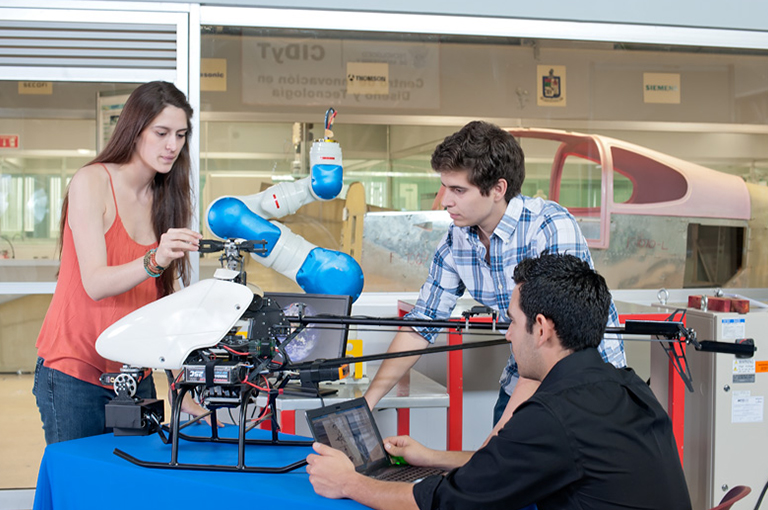A new report from the MIT identifies the three main trends driving change in engineering education.
A new report from MIT charts upcoming trends in the engineering education landscape. The publication profiles some of the emergent institutions spearheading the field and how they differentiate from well-established leaders, like MIT’s own Ollin Engineering College.
Through a combination of interviews with global thought leaders in engineering education and case studies of emerging leading programs, the report highlights key developments in the field. Monterrey Tech is mentioned as one of Latin America’s rising innovators. The document showcases Tec21 as a learning model that blends online, campus and real-life learning.
The report defines current leaders in engineering education as well-established research universities with large student cohorts. Emerging leaders are completely new initiatives or the product of system-wide educational transformation, and are adapted to cater specifically to the needs of their respective regions. Classic institutions are renowned for their rigorous teaching of engineering foundations and tech entrepreneurship. Newcomers have built their education models around multidisciplinary work-based learning and an emphasis on student self-reflection.
These new engineering programs show a pattern of inspired leadership, innovative teaching faculty, and having the tools to experiment with new ways of delivering education. Among their common challenges is the need to scale their student-centered design to match large student cohorts, promote high-quality teaching, and get better traction with state governments.
The document identifies three main trends driving change in engineering education. The first is a geographical shift from high-income western countries to strong emerging economies in Asia and Latin America. Many countries in these regions see great potential for economic growth in investing in innovative engineering programs that prepare the highly-qualified workforce they need to remain competitive.
The second trend is a move towards a curriculum open and relevant to societal needs. This type of programs emphasizes student preferences, multidisciplinary learning and outside real-world experiences. Many of these features appear in current leader’s programs, but they are mostly add-on activities yet to be fully integrated into the curriculum.
The third trend is a drive to deliver an integrated student-centered learning experience at scale. Integration comes from a backbone of multidisciplinary design projects that connect campus learning with work-based learning.
MIT’s report suggests engineering education is currently undergoing a period of rapid changes in its core practices. The list of relevant field players, is no longer confined to a few very well-established and massively-funded institutions. This surge of innovation in education around the globe is rising the benchmark of what is possible.
This article from Observatory of the Institute for the Future of Education may be shared under the terms of the license CC BY-NC-SA 4.0 
)
)











)
Rubí Román
Rubí Román
Rubí Román